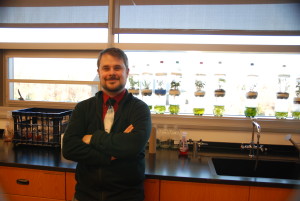Kate Beinkampen ‘19 Grace Reilly ‘19: Unlike many other schools, where substitutes come and go and do not work exclusively for a specific school, Episcopal employs a specific group of teachers for the sole purpose of teaching a specific class. Permanent substitute teachers have the ability to make the transition period for teachers’ absence run smoothly.
Most teachers have significant influence in deciding who substitutes their class and ensuring he or she has the right credentials and experience to equitably teach their students. Depending on the situation of the teacher’s leave, the amount of communication between the teacher and the substitute may vary.
In some cases, substitutes have the opportunity to “shadow” the teacher they will be filling in for before the teacher’s leave. Shadowing allows the substitute to observe the teaching style and get an accurate perception of the way the class works.
As James Miller, who subbed a class taught by Perry Zanki for three weeks, said, “Sometimes substitute teachers come in and it’s just ‘boom, there you go,’ so I feel lucky to get to shadow Mr. Zanki. It’s almost like he’s a coach.”

Similarly, Angela Miklavcic, Chair of the Science Department, explains, her substitute was able to “shadow classes and actually co-teach for a couple of days.”
Along with communication, the amount of structure provided for the substitute teacher varies. Miller explains, “I saw what Mrs. Trimble had been up to and she just said, ‘this is where we are.’ Based on this, I had to create lesson plans for the students.”
In other cases, substitutes are actually given even more planned materials, including lesson plans. Miklavcic, for example, says she, “prepared mini videos for the students, along with quizzes and questions embedded in them.” She also wants to Skype her students while away, allowing them to directly share any questions or concerns with her. Miklavic, like most teachers preparing to take a leave of absence, “hopes that these methods will make her return easier on her students.”
Inevitably, there is some variation in teaching styles between the teacher and the incoming substitute. “Every teacher has their own slant of things, things that excite them and topics they find important,” said Matt Shapiro, chemistry and biology teacher.
However, many substitutes know how to combat this well. “It was very easy for me to come in and take over from where [the teacher] had left off,” said Miller, describing the dream of most substitute teachers. Miklavcic describes that she’s even looking forward to seeing how these tools work during her leave by saying, “I’m excited because it’s a new opportunity for me to see a new learning model and if we can use that in the classroom.”
Miller credits the students and teachers for the majority of his smooth transition, noting, “I found the professionalism of the students to be very high. They were very welcoming of me, someone who they didn’t know, coming in; very open to listening to me talk versus the teacher who they have known since the beginning of the year.”
He continued saying, “Not only the students have been welcoming but the teachers have been incredibly supportive and helpful. Everybody across the whole school has been incredibly helpful in that sense.”